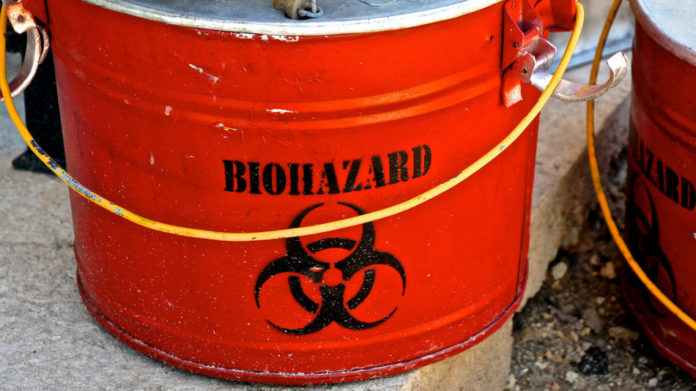An Ebola Patient Generates 440 Gallons of Medical Waste Daily

Anything that comes into contact with the patient and the virus — including the patient’s expelled bodily fluids, gloves, masks, booties, gowns, bed sheets, mattresses and more — all must be disposed of safely and with frequency. There’s also confusion on what to do with the soiled materials.
Dr. David Perrott, chief medical officer for the California Hospital Association, told the L.A. Times that health care workers are not sure if infected human waste can be flushed down the toilet.
“Here’s what we’ve heard from the CDC: It’s OK,” Perrott said. “But then we’ve heard from some sources that maybe we need to sterilize it somehow and then flush it down the toilet or you have to check with local authorities. It sounds maybe a little gross, but there is a real question about what to do with that waste.”
So far, just three people have been diagnosed with Ebola in the United States, and five others infected in the West Africa outbreak have been treated here.
Jennifer Bayer, spokeswoman for the Hospital Association of Southern California, however, said: “We fully expect that it’s coming our way,” Bayer said of the virus. “Not to create any sort of scare, but just given the makeup of our population and the hub that we are, it’s very likely.”
In terms of the expected waste from such an outbreak, the good news is that the virus cannot survive burning at 1,500 degrees, pressurized steaming or when doused with bleach. Incineration is what’s recommended to destroy Ebola-tainted materials.
The bad news is that incineration of medical waste like this is illegal in some states. California’s last medical waste incinerator closed in 2001, according to the report. The materials would therefore possibly have to be appropriately packed (in more waste-generating items), and transported to a medical waste incinerator out of state. Such incinerators are currently in operation in the following states: Alabama, Maryland, North Dakota, Oklahoma, Utah and Texas.
Burning, in turn, generates its own waste, contributing to pollution, which can drive climate change and a multitude of other environmental problems. At least it would help to keep the deadly virus in check.
As National Resources Defense Council senior scientist Allen Hershkowitz said, “There’s no pollutant that’s going to come out of a waste incinerator that’s more dangerous than the Ebola virus. When you’re dealing with pathogenic and biological hazards, sometimes the safest thing to do is combustion.”

